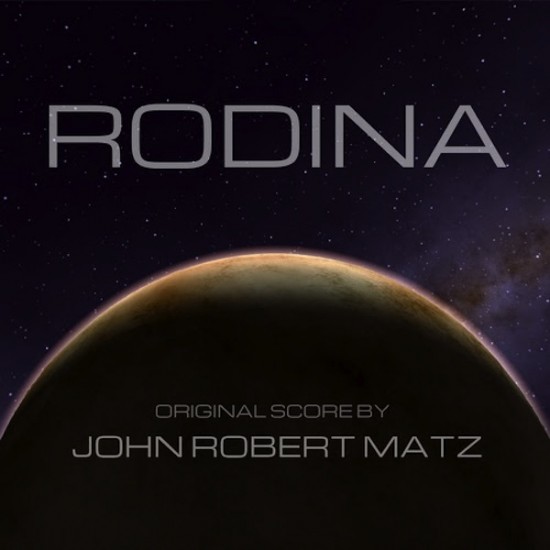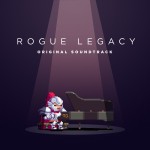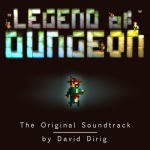
An indie game that seeks to capture the joy and excitement of exploring deep space? Okay, consider me interested. Rodina is an indie project created by Brendan Anthony, the founder and sole member of indie developer Elliptic. This science fiction game takes place in a procedurally generated world that allows you to seamlessly travel from one planet to the next. Players can travel through space, engage in space battles, discover planets, land on the planets, and explore them outside of the ship. While the game is still in a sort of early access or alpha state, it has the core concepts and gameplay well presented. Think of it as a project similar to Minecraft. Starting off small, but continuing to be built and improved with the support of a dedicated player base. That at least seems to be the hope of the developer.
While Brendan Anthony is programing and adding to this game as a solo gig, there is one other contributor to this game. This would be composer John Robert Matz, who has written an original score for Rodina. Matz has had previous experience on game soundtracks. You may recognize him for his collaborative work on the Gunpoint OST, an album which we recently reviewed here on OSV. He certainly has his work cut out for him in this ambitious game title. Does he manage to pull it off? Read on to find out.
The score for Rodina contains a mixture of orchestral instruments and electronic synth. Some of the tracks have more emphasis on the synth instruments than orchestral, particularly the tracks for flying through space. The first piece “Main Theme” is exactly what the track name implies. It’s the primary theme that makes occasional reappearances in the album’s later tracks. A good mixture of orchestral and synth instruments are present in this first piece. While this track does make use of mostly electronic effects and leads, you can hear a handful of brass instruments and strings accompanying in the mix. It sets up the listener and player perfectly for what they will be hearing in the rest of the score.
The music falls into three basic categories. The first of these are the exploration music. Most of these take the form of orbit and approach tracks, with each planet receiving its own unique set of them. These lean more the orchestral side, with only trace elements of electronic instruments.
The track, “Jarilo: Warm Sands (Orbit)” and “Jarilo: Beginning Approach” are a great example of this. The first is a tranquil and mysterious piece. The strings and horns gently play out a theme that will be heard in a later track, once you reach the planet’s surface. The woodwinds also get their turn with the theme towards the end of the track. The second piece, the approach track, has a greater sense of momentum, with the low strings and brass helping build a more urgent pacing as you attempt landing on the planet’s surface. These orbit and approach tracks for each planet, with their contrasting pacing and moods, help transition into the next category of tracks. This category is the planet tracks.
Once you successfully land on the surface of one of the planets, the music switches to orchestral instrumentation almost exclusively. The planet pieces are easily one of the best aspects of this soundtrack. In the case of “Jarilo: Planet of Genesis,” the themes heard in the associated planet’s orbit track, come out in full force. This piece in particular features some beautiful brass solos, sweeping strings, and some excellent woodwind flourishes and countermelodies. This set up repeats with each of the planets in the game. An orbit track plays as you prepare to enter the planet’s atmosphere, an approach track as you attempt to land, and finally a piece for the planet itself. The orbit tracks often contain themes that are further developed or expanded upon once you reach the planet’s surface.
Each planet has its own attributes and personality. The moods range from calm and mysterious to foreboding and hostile. This is all reflected incredibly well through the music. The planet Jarilo has a very calm and serene feeling and atmosphere; Veles is more tense and ominous, with some very foreboding low woodwind melodies accompanied by percussion and low strings; Morena is quiet and ethereal, and is one of the only planet tracks to incorporate any synth elements into the music. Finally, the planet Perun has a very percussive and intense score, filled with low string ostinatos, heavy brass, and battle-like drums. Even in the more tense and eerie planet pieces, there’s a sense of mystery and wonder to each of them. Rodina is a game about exploration, and the planet themes play their part well to draw the player into these strange and contrasting worlds.
The third and final category of music in Rodina’s score is the battle music. As you would expect, these pieces are much more fast paced and energetic than the others. In these tracks you hear a great blend of synth and orchestra instruments. Some of these tracks, like “Closing to Engage” and “Target Rich Environment,” lean more heavily on the orchestra for their sound. Others like “Aggressor Unknown” have an equal emphasis on booth synth and orchestral instruments. These pieces begin when you engage in battle with alien craft in your travels through the solar system. In terms of both the music and gameplay, it provides a good element of contrast to the game’s more relaxed exploration gameplay. There’s a sense of urgency and tension in each of the battle themes, which helps heighten the thrills and dangers of the combat. “Aggressor Unknown” is easily one of the highlights of this category, combining both synth and orchestral elements for some very exciting battle music.
With all that said, the Rodina OST is an excellent album. While the game may still be in a state of continuing improvement and enhancement, the music feels complete and well constructed. John Robert Matz has created a soundtrack with a very polished sound that manages to blend elements of synth and orchestra instruments in a balanced and unique way. The battle themes are exciting and energetic, while the rest of the soundtrack builds a mysterious and engaging atmosphere. The music for each of the planets helps give each planet an identity, while instilling a sense of wonder and beauty to these interstellar landscapes. It’s a great collection of music for a very ambitious game. I would recommend checking out both this game and its soundtrack. The Rodina OST can be found and purchased on Loudr.
Tags: Brendan Anthony, Elliptic, Indie, John Robert Matz, Music Reviews, Orchestral, Reviews, Rodina, Soundtrack, Synth, VGM, Videogame music







































